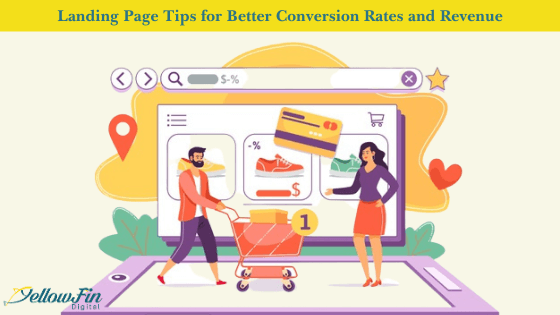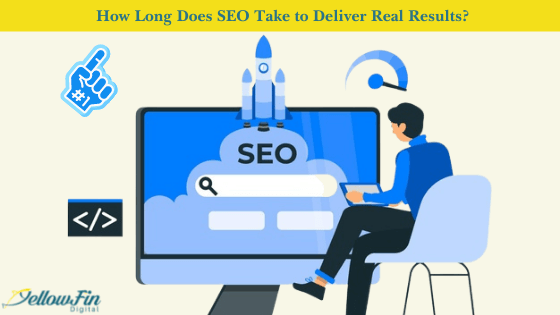Do you think your online store is performing as great as possible?
Well, unless you are making a 100% conversion on every person who visits the store, then there is always some scope to improve.
Among various factors that influence your eCommerce store conversions, the product pages play a huge role. It can be related to the product descriptions, images, easy interface and a lot more factors.
There is one little trick to find out if your product pages need optimization. If the online store is experiencing a huge bounce rate from the product pages or a high cart abandonment rate, then it’s a sign that you need to concentrate on the product pages.
In this blog, we will see some practical ways to optimize the eCommerce product pages that will directly help with the conversions.
10 Proven Ways to Optimize eCommerce Product Pages
You may have the best products that people really want. Your checkout process may be the easiest any user has come across. You may have the most helpful customer service. However, when the user isn’t satisfied with what they see on the product pages, all of the other things are for nothing.
If you want to motivate the people to make a purchase, you need a fully-optimized product page that has everything a user looks for. Let’s jump in and see what those are!
1. Furnish Complete Product Information
According to a report by Shotfarm in 2015, 40% of people have returned a bought product because of poor product page descriptions.
30% of customers have abandoned their shopping cart due to the same reason and 86% of the people said that it’s very unlikely to buy from the same e-store if the product description was found to be inaccurate.
So, you need to furnish all the needed information about the product. These details include:
- The most descriptive product title
- The essential features and benefits
- Solutions that address the pain points
- Brand details
- Size, dimensions or material information
If there is anything more about your product that you think the shoppers will want to know, add them too.
2. Create Product Descriptions That Sell
While some e-stores don’t have all the product information, others have the necessary information but still aren’t able to convert.
This is because the description isn’t presented in a way that’s easy for the shoppers to read. No one wants to read a 500-word product description when they are browsing. So, having a short and crisp description that offers a quick view of the product information is a must. Nike’s e-store is the perfect example of product descriptions that are simple, to-the-point and detailed.

Look at the detailed product description with sub-headings for the highlighted features and the product details towards the end. The description includes the name of the material and even the country of origin.
You can also create a minimal product description that’s detailed yet doesn’t look lengthy.
3. Attractive Images That Captures Attention
One of the very first things that shoppers look at before buying a product is the accompanying image. The image has to be of high-quality and clearly depicting the product from all directions.
For e-stores selling clothes and any other impressionable products, it’s vital to have an easy zoom option. At YellowFin Digital, we have worked on optimization of Southern Honey Boutique store with easy pan and zoom images like this one:
Make sure to have such high-quality images of the product from all directions with smooth pan and zoom options.
4. Add Descriptive Videos if Possible
Not many eCommerce stores add videos for all their products. It can be time-consuming, yes, and need extra investment. But, a video that can help in converting those leads who are on the wall. Nike has a short video of their Jordan Max 200 shoe that showcases how the shoe looks from all directions.
Yet another example a video making a strong point is Bellroy:
You can use your creativity to depict your product in a similar way and leverage your main selling point in the video.
5. Add Customer Reviews of the Products
Did you know that having five reviews of a product will increase the likelihood of conversions by over 270% than a product with no reviews?
Online reviews have a massive impact on sales, according to a report by Spiegel Research Center. Featuring product reviews on the appropriate product pages will immensely increase your conversions. It’s a known fact that people depend more on online reviews. So having some great, genuine product reviews by your customers will help in quickly moving the shoppers towards a purchase decision.
6. Add FAQs to Educate the Shoppers
Blatantly coming out to sell your products is a thing of the past. Educating the shoppers and leading their decision towards what you sell is what works right now. So having a FAQ section for every product page will help in answering the queries a shopper may have about your product.
You can also leave a field open for the shoppers to directly contact you and ask questions for which you can leave public replies. Have a look at how Pendleton is allowing people to ask questions and reply to them.
If you don’t have such a FAQ section, our team at YellowFin Digital can help you with that. We will add an easy feature where users can post their questions and you can promptly answer them and even notify the user about the answers.
7. Use Product Information as the Key Selling Point

Take a look at how the homepage of the Jabra looks. As an electronic store exclusively for headsets, they understand what the shoppers would want to know and have added these details right on the browsing section. In such cases, the product description is one of the selling points and therefore, they have included the features directly.
If you are selling something similar where the product description is also a key selling point, aside from the product image, make sure to include that too.
8. Minimalism Is the Key
Believe it or not, less is more. Having a simple website, with a neat, short, all-inclusive description with a clean photograph is often the best. The top brands like Apple, Google and Nike have proved it time and again.
Let’s take a look at a product page of Sony Asia. The image is simple, focusses on the product’s quality and the accompanying description talks about its best features right from the title. In this space, we come to know about the resolution, sound quality and the slim nature of the video.
Marketing your product with fluff will no longer work, especially in the product pages. Shoppers want to get down to the details and not go through lines of fluffy descriptions that are, in no way, adding value to the product.
Check it out few steps for a successful eCommerce website redesign
9. Speed, Speed, Speed!
We cannot stress more on how much the loading time of a page can have an impact on your conversions. When you are including lots of images and videos (which is a must), your loading time can decrease.
To avoid this issue, you need to work with the latest CMS version and compress the images and other huge files on the website. Test the product pages often to eye on the site speed. Generally, anything less than a loading time of 5 seconds is the best.
Our web developers and designers at YellowFin Digital are most cautious about the loading speed of e-store. We have helped many eCommerce businesses to ramp up their e-store by optimizing the website speed through a number of modifications. Contact our team to know more we can help you with your e-store.
10. Add Social Proof
Nowadays, social media is everywhere. So, adding quick social proofs on the product page will allow the new shoppers to have a look at user-generated content.
Many e-stores are now adding links to the popular social media platforms like Instagram, Twitter. Pinterest and Facebook. Some are even adding user-generated content on their product page. Photoslurp found that user-generated content is 5x more likely to convert!
You can use such social proofs and user-generated content in a creative way to make the reviews or product images more relatable.
While the homepage of the e-store is intended to hook the shoppers, the product page is where the conversions happen. So, make the most of the people who land on your product page by offering what they want – product visuals, descriptive details and product credibility.






